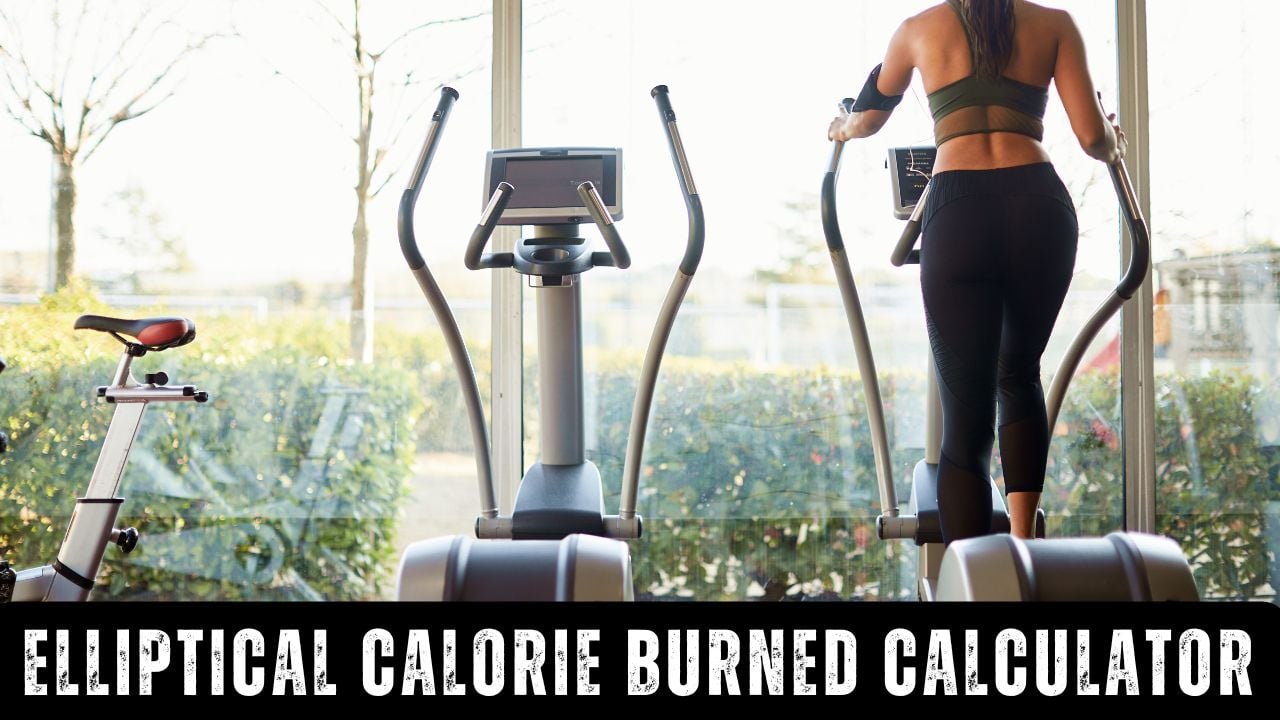Elliptical Calories Burned Calculator
Calculate calories burned during elliptical workouts using official MET values. Customize your workout intensity, resistance, and duration for accurate results.

How Many Calories Burn During Elliptical
Calculate your elliptical calorie burn with scientific precision. Elliptical training burns 270-800+ calories per hour depending on intensity and body weight. Our research-backed calculator uses validated MET values from the Compendium of Physical Activities and biomechanical studies to provide accurate calorie estimates for all elliptical training intensities.
Elliptical METs
What is a MET for Elliptical?
MET (Metabolic Equivalent of Task) represents energy expenditure, with elliptical training ranging from 4.5-10.0+ METs. Research from biomechanical studies validates these standardized measurements for elliptical exercise.
The Elliptical Calorie Formula
Calories = T × 60 × MET × 3.5 × W ÷ 200
Where:
- T: Duration in hours
- W: Weight in kilograms
- MET: 4.5-10.0+ (intensity dependent)
Elliptical Intensity Levels and METs 🏃♀️
Light Elliptical
- MET Value: 4.5
- Gentle movement, minimal resistance
- Legs only, no arm involvement
- 270-320 calories/hour
Moderate Elliptical
- MET Value: 6.0
- Standard pace, moderate resistance
- Some arm movement
- 360-425 calories/hour
Vigorous Elliptical
- MET Value: 8.0
- Brisk pace, high resistance
- Active arm pole use
- 480-565 calories/hour
High-Intensity Elliptical
- MET Value: 10.0+
- Maximum effort training
- Full arm-leg integration
- 600-700+ calories/hour
Factors Affecting Elliptical Calorie Burn 🎯
Body Weight Impact
Higher body weight increases calorie burn proportionally. A 180-lb person burns 25% more calories than a 140-lb person at the same intensity. Calculate your daily needs with our TDEE Calculator.
Arm Pole Usage
Active arm pole use increases calorie burn by 25-30% according to research studies. Push and pull actively rather than just holding.
Resistance Level
Each resistance level increase adds approximately 0.7 METs to energy expenditure, as shown in biomechanical analysis.
Stride Rate
Higher stride rates increase oxygen consumption and calorie burn. Each 20 strides/minute increase adds approximately 0.5 METs.
Direction Changes
Changing direction periodically engages different muscle groups and can increase overall energy expenditure by 5-10%.
Fitness Level
More trained individuals may burn fewer calories at the same intensity as their bodies become more efficient, but can sustain higher intensities longer.
Elliptical vs Other Cardio: Calorie Burn Comparison 📈
| Exercise Type | MET Value | 30-Min Burn (150 lb) | Impact Level | Joint Stress |
|---|---|---|---|---|
| Elliptical (Moderate) | 6.0 | 204 calories | Low | Minimal |
| Elliptical (Vigorous) | 8.0 | 272 calories | Low | Minimal |
| Running (6 mph) | 9.8 | 334 calories | High | High |
| Cycling (Moderate) | 8.0 | 272 calories | Low | Low |
| Swimming | 8.0 | 272 calories | None | None |
Advanced Elliptical Training Insights 🔍
Research-Backed Benefits
Studies from clinical research show elliptical training provides cardiovascular benefits equivalent to running while reducing joint stress by up to 75%.
Optimal Technique
Research indicates that maintaining proper posture and actively engaging arm poles can increase calorie burn by up to 30% compared to passive arm positioning.
Maximize Your Elliptical Calorie Burn 💡
🎯 Interval Training
Alternate between high and moderate intensity every 2-3 minutes to increase overall calorie burn by 15-25%.
💪 Active Arms
Push and pull the arm poles actively rather than just holding them to maximize upper body engagement.
📈 Progressive Resistance
Gradually increase resistance rather than speed for better muscle toning and sustained calorie burn.
🔄 Direction Changes
Change direction every 5-10 minutes to target different muscle groups and prevent adaptation.
Related
- Basketball Calories Burned Calculator
- Badminton Calories Burned Calculator
- Boxing Calories Burned Calculator
- Plank Calories Burned Calculator
- Burpee Calories Burned Calculator
- Crunches Calories Burned Calculator
- Sit-Up Calories Burned
- Zumba Calories Burned Calculator
- Pull Up Calories Burned Calculator
- Push-Up Calories Burned Calculator
- Home Activities Calories Burned Calculator
- Exercise Calories Burned Calculator
- Running Calorie Calculator
- Walking Calorie Burned Calculator
References
- Ainsworth BE, Haskell WL, Herrmann SD, Meckes N, Bassett Jr DR, Tudor-Locke C, Greer JL, Vezina J, Whitt-Glover MC, Leon AS. The Compendium of Physical Activities Tracking Guide. Healthy Lifestyles Research Center, College of Nursing & Health Innovation, Arizona State University.
- Mier CM, Feito Y. Metabolic cost of stride rate, resistance, and combined use of arms and legs on the elliptical trainer. Res Q Exerc Sport. 2006; 77(4):507-513.
- Morio C, Haddoum M, Fournet D, Gueguen N. Influence of exercise type on metabolic cost and gross efficiency: elliptical trainer versus cycling trainer. J Sports Med Phys Fitness. 2016; 56(5):520-526.

Manish is a NASM-certified fitness and nutrition coach with over 10 years of experience in weight lifting and fat loss fitness coaching. He specializes in gym-based training and has a lot of knowledge about exercise, lifting technique, biomechanics, and more.
Through “Fit Life Regime,” he generously shares the insights he’s gained over a decade in the field. His goal is to equip others with the knowledge to start their own fitness journey.
